Stray Dog Collapses In Relief When She Realizes Her Puppies Are Safe
Earlier this month, a woman named Carlin Curtis was driving through Mississippi when she noticed something unusual on the side of the road. At first glance, it seemed like just another stray animal wandering along the rough gravel and dirt. But as she slowed down and looked closer, Curtis saw a heartbreaking scene — a weary mama dog surrounded by three tiny puppies huddled together in the rocks. The dogs had no shelter, no food, and no water. Their fur was dusty, their ribs faintly visible, and the exhaustion in their eyes told a story of hardship. It was clear they had been dumped and abandoned, left to fend for themselves in the sweltering heat. For many stray animals, this is where the story ends — but for this little family, the right person happened to come by at the right time. Curtis was not just any passerby; she was an independent rescue partner with Wright-Way Rescue, a group that specializes in saving abandoned animals in rural areas of the Southern Midwest. And that day, fate made sure her path crossed with theirs. Sugar’s Relief At Finally Being Seen The mama dog, later named Sugar, must have sensed that Curtis was there to help. Instead of running away in fear, Sugar cautiously walked up to her, tail wagging softly, her eyes filled with a mixture of hope and desperation. Nursing three hungry puppies had drained her energy, and yet she still pushed forward to greet the woman who had stopped to see her. Curtis immediately offered Sugar some food — a small but lifesaving act. The hungry dog devoured the meal with gratitude, finally filling her stomach after what was likely days of scrounging through trash or going without food. For a nursing mother, this simple act of kindness was a lifeline. Meanwhile, Curtis gently gathered the three tiny puppies and placed them into a large plastic tub she always keeps in her car for rescues like this. The puppies squirmed together, confused but safe for the first time since being abandoned. Once she knew her babies were secure, Sugar finally let herself relax. Curtis opened the back seat of her car, and the exhausted mama curled up inside. For the first time in what was probably weeks, she allowed herself to collapse in relief, drifting into a deep, well-deserved nap. From Roadside Despair To Loving Foster Homes Curtis transported the little family to Wright-Way Rescue, where they were examined by veterinary staff. To everyone’s relief, both Sugar and her three puppies were in relatively good health despite their ordeal. “Because they had been found together and still looked strong, they were able to go directly into foster care,” explained JeriLynn Burks, director of development at Wright-Way Rescue. It didn’t take long for Sugar’s foster family to fall in love with her. The gentle, affectionate mother dog quickly adapted to her new environment, soaking in the comfort of a soft bed, reliable meals, and the kind hands of humans who cared for her. Within weeks, the foster family officially adopted her, ensuring she would never again know the fear of abandonment. Meanwhile, her puppies — soon named Bailey, Bree, and Burt — were transferred to the rescue’s medical campus in Southern Illinois for the next stage of their journey. The three siblings showed off their playful personalities almost immediately. Full of puppy energy and curiosity, they tumbled around their enclosure, chasing each other and bouncing with excitement at every new toy or visitor. Burks described their different personalities: Despite their rocky start in life, the puppies’ joyful spirits were unshaken. A Future Filled With Hope And New Adventures The puppies have already been spayed and neutered, an important step in ensuring their healthier futures and helping reduce the cycle of stray litters. After completing a two-week health hold, they will receive vaccinations and begin socializing with other puppies at the rescue campus. “Once they’re 16 weeks old and fully vaccinated, they’re cleared for outdoor walks and adventures,” Burks explained. Until then, they’ll continue to thrive under the care of Wright-Way staff, getting all the love, food, and playtime they need. As for Sugar, life has completely transformed. No longer a starving stray fighting to keep her puppies alive, she is now a cherished member of a forever family. She spends her days resting, eating as much as she needs, and soaking in the affection she had been denied for so long. Her journey is a reminder of what can happen when compassion meets action. If Curtis hadn’t stopped that day, Sugar and her puppies may not have survived. Instead, because of one person’s willingness to help, four lives were saved — and transformed forever. A Lesson In Kindness And Rescue Stories like Sugar’s highlight both the cruelty and the hope that exist in the world of animal rescue. On one hand, it is devastating to think that someone abandoned a nursing mother and her puppies by the roadside. On the other, it is heartwarming to see how quickly their story changed once they were noticed by the right person. For rescue organizations like Wright-Way Rescue, these moments fuel their mission. Every abandoned animal saved is proof that compassion can turn despair into joy. And every adoption, like Sugar’s, shows that even the most broken beginnings can lead to beautiful new chapters. Today, Sugar sleeps soundly in her new home, and her puppies are thriving in preparation for their own forever families. From the dust of a Mississippi roadside to the warmth of loving homes, their journey is a testament to resilience, hope, and the power of a helping hand.
Stray Dog Collapses In Relief When She Realizes Her Puppies Are Safe Read More »




